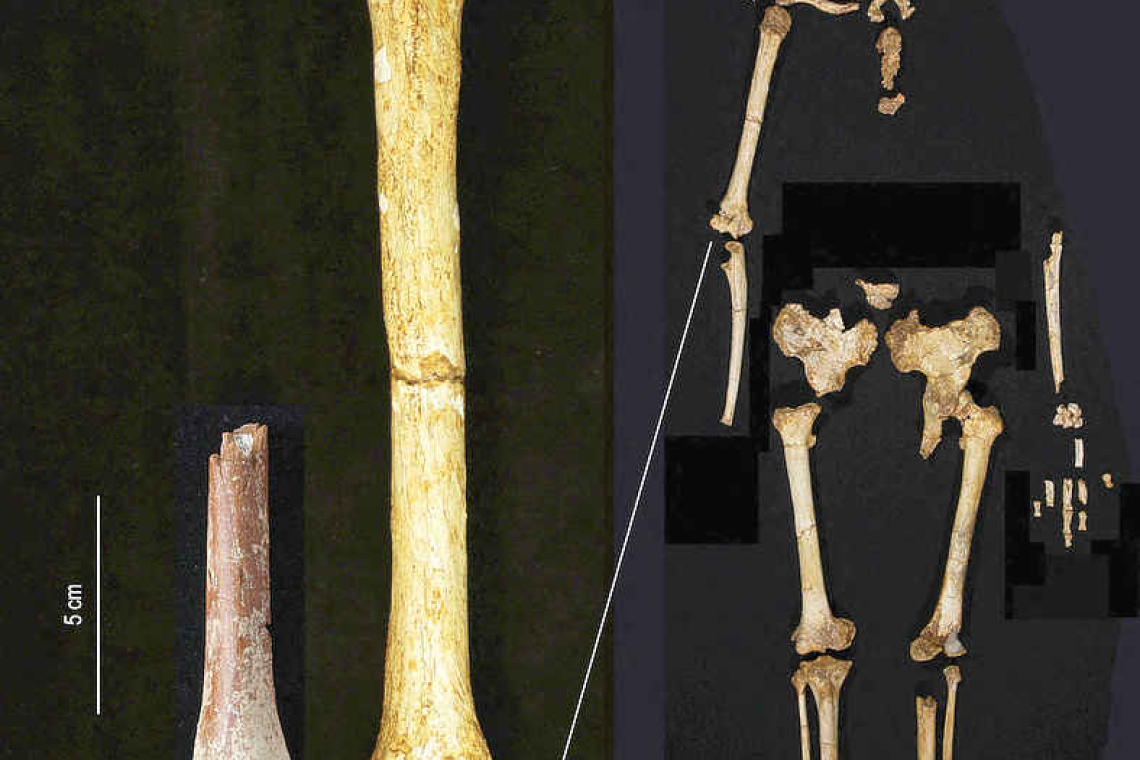JAKARTA--When researchers excavated fossilized fragments of a rod-shaped bone 3-1/2 inches (88 mm) long at a site called Mata Menge on Indonesia's Flores island, the pieces initially were bagged and marked "crocodile bone fragment?" It was only later that they realized what they actually were.
These fragments, dating to about 700,000 years ago, of the upper arm bone, called the humerus, comprise the smallest limb bone known for any member of the human evolutionary lineage - an adult individual of the diminutive extinct species Homo floresiensis. And the fossil has unlocked the mystery of the origin of this species, nicknamed "The Hobbit".
Scientists on Tuesday announced the discovery of this incomplete humerus - missing both of its ends - as well as two fossilized teeth from Mata Menge in the So'a Basin of Flores, where the volcano Ebulobo looms over the landscape. While dental and jaw fossils of the same age previously were found at the site, the humerus is the first Hobbit bone beyond the cranium identified at Mata Menge.
Based on the bone's size, the researchers concluded the individual stood about 3 feet 3 inches (one meter) tall - about three inches (6 cm) shorter than the estimated height of the famous 60,000-year-old Homo floresiensis fossil uncovered in 2003 at the Liang Bua cave site roughly 50 miles (75 km) away.
Since the sensational discovery of Homo floresiensis, scientists have debated its origins. The leading hypotheses were that the Hobbit descended either from an archaic human species called Homo erectus, which arose in Africa and spread to other parts of the world, or from even more primitive species such as Homo habilis or Australopithecus afarensis, not known to have left Africa.
The similarities between the Mata Menge fossils and Homo erectus fossils from Indonesia's island of Java provide strong evidence that Homo floresiensis descended from that species, the researchers said. "This means that Homo floresiensis experienced dramatic body size reduction from large-bodied Homo erectus, whose body size was similar to us modern humans," said University of Tokyo paleoanthropology professor Yousuke Kaifu, lead author of the study published in the journal Nature Communications.
The Flores fossils are most similar to Homo erectus fossils dating from 1.1 million to 800,000 years ago from Sangiran, Java, Kaifu said, and not the more primitive species. "The discovery offers support to the idea that an evolutionary process known as island dwarfism tinkered with the genetics of a group of large-bodied Homo erectus that somehow made it from the continental landmass of Asia to the isolated island of Flores, perhaps one million years ago or more," said archaeology professor and study co-author Adam Brumm of Griffith University's Australian Research Centre for Human Evolution.
They reduced drastically in body size on Flores between about one million and 700,000 years ago, giving rise to Homo floresiensis, Brumm added. Under the island effect, larger-bodied mammals such as elephants - which also resided on Flores - diminish in size over time.
"It is thought that the main reason for this size reduction over many generations is that being small has more advantages than being large on an island. Periodic shortages of food are most likely the main selective force toward smaller body size," said University of Wollongong paleontology professor and study co-author Gerrit van den Bergh.







